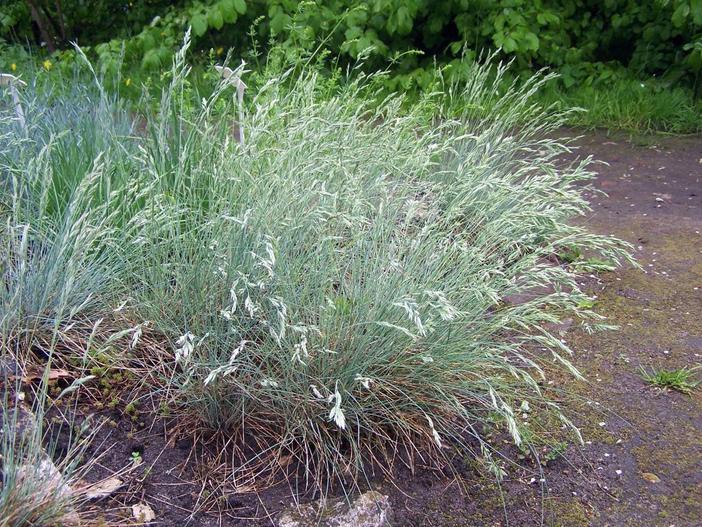Blue Fescue
(Festuca cinerea)
Blue Fescue (Festuca cinerea)
/
/

Opioła Jerzy (Poland)
CC BY 2.5
Image By:
Opioła Jerzy (Poland)
Recorded By:
Copyright:
CC BY 2.5
Copyright Notice:
Photo by: Opioła Jerzy (Poland) | License Type: CC BY 2.5 | License URL: https://creativecommons.org/licenses/by/2.5 | Uploader: Selso | Publisher: Wikipedia Commons















Estimated Native Range
Summary
Festuca cinerea, commonly known as Blue Fescue, is a semi-evergreen perennial grass native to open, rocky places in Europe, particularly in France and Italy. It typically grows to a height and width of approximately 0.8 feet (0.2 meters), forming dense, dome-shaped tufts of fine, blue-gray foliage. Blue Fescue is valued for its striking, fine-textured, silver-blue leaves that provide year-round interest, especially in winter when many other plants are dormant. The plant produces inflorescences of greenish-brown flowers in early to mid-summer, which are not particularly showy but add a subtle texture to the garden.
Blue Fescue is popular in cultivation for its compact size and distinctive color, making it an excellent choice for rock gardens, border fronts, and as a ground cover. It is also used in container plantings and urban gardens. This grass prefers full sun and can tolerate a range of soil types, provided they have good drainage. It is drought-tolerant once established, making it suitable for xeriscaping. Blue Fescue requires minimal maintenance, but it benefits from being divided every few years to rejuvenate its growth. While generally disease-free, it can suffer from rust in humid conditions and may not thrive in hot, humid climates.CC BY-SA 4.0
Blue Fescue is popular in cultivation for its compact size and distinctive color, making it an excellent choice for rock gardens, border fronts, and as a ground cover. It is also used in container plantings and urban gardens. This grass prefers full sun and can tolerate a range of soil types, provided they have good drainage. It is drought-tolerant once established, making it suitable for xeriscaping. Blue Fescue requires minimal maintenance, but it benefits from being divided every few years to rejuvenate its growth. While generally disease-free, it can suffer from rust in humid conditions and may not thrive in hot, humid climates.CC BY-SA 4.0
Plant Description
- Plant Type: Grass
- Height: 0.8-1 feet
- Width: 0.8-1 feet
- Growth Rate: Moderate
- Flower Color: N/A
- Flowering Season: Spring, Summer
- Leaf Retention: Semi-Deciduous
Growth Requirements
- Sun: Full Sun
- Water: Medium, High
- Drainage: Medium, Fast
Common Uses
Bank Stabilization, Bird Garden, Deer Resistant, Drought Tolerant, Erosion Control, Groundcover, Rabbit Resistant, Rock Garden, Street Planting
Natural Habitat
Open, rocky places in Europe
Other Names
Common Names: Kalksvingel
Scientific Names: , Festuca cinerea, Festuca glaucina, Festuca cinerea f. bohemica, Festuca cinerea f. depauperata, Festuca cinerea f. insularis, Festuca cinerea f. longifolia, Festuca cinerea f. paradoxa, Festuca cinerea f. pubiculmis, Festuca cinerea f. punctata
GBIF Accepted Name: Festuca cinerea Vill.